Polish food is hearty, flavorful, and deeply rooted in tradition. It is also experiencing a revival, re-inventing itself in major Polish cities as the country celebrates its heritage and embraces the latest trends and inspirations from world cuisines. Today, while dishes like pierogi, kielbasa, and bigos (hunter’s stew) are one you must try while visiting Poland, there’s much more to explore, from comforting soups to sweet desserts and unique regional specialties.
Modern Polish cuisine reflects a blend of historical influences, including German, Jewish, and Russian culinary traditions. Polish cuisine is rich in savory, tangy, and slightly sweet flavors. It makes liberal use of pork, poultry, and dairy products as well as hearty vegetebles like cabbage and potatoes. Fish, especially carp, is also widely available and especially popular for holiday meals. Major spices and herbs include marjoram, dill, caraway, allspice, bay leaves, and pepper, which add warmth and depth to soups, stews, and meats. The cuisine’s bold flavors often come from fermented foods like sauerkraut and pickles, smoked and cured meats, and slow-cooked dishes that develop deep, comforting tastes.
For vegetarians, Poland offers a mix of challenges and surprises—while traditional cuisine leans heavily on meat and dairy, there are plenty of delicious plant-based options, especially in cities like Warsaw and Kraków, where vegetarian and vegan restaurants thrive, often with innovative takes on Polish cuisine. Regional differences also add to the richness of Polish food culture, with hearty mountain fare in the south, seafood specialties along the Baltic coast, and unique Eastern influences near the Belarusian and Ukrainian borders.
The following is a guide to the rich cuisine that you will encounter in the beautiful country of Poland.

Bajgiel: (Breads) Known in English as a bagel, this round, ring-shaped bread has a chewy texture and a crisp crust, achieved by boiling the dough before baking. It was introduced to Polish cuisine by the Jewish communities in Kraków, with which the bajgiel is still associated. A Kraków-style bajgiel is often sprinkled with salt, poppy seeds, or sesame seeds and, when additionally braided into a distinctive spiraling circle, is known as a “obwarzanek krakowski” (the name comes from the Polish verb obwarzać, “to parboil”).
Barszcz: (Soup) A beet-based soup, often served with sour cream and sometimes with dumplings called uszka. It is a staple of Polish Christmas Eve dinner and is enjoyed year-round.
Bigos: (Stew) A traditional Polish hunter’s stew made with sauerkraut, fresh cabbage, various meats, and spices. It is often considered the national dish of Poland.
Boczek: (Ingredient) Smoked and seasoned pork belly, commonly used as an ingredient in Polish dishes or eaten on bread.
Caraway Seeds: (Seasoning) Used in rye bread, kapusta kiszona (sauerkraut), bigos, and some meats, caraway seeds are a foundational part of the Polish flavor profile and give a slightly earthy, licorice-like taste.
Chłodnik: (Soup) A cold beet soup mixed with yogurt or sour cream, often served with cucumbers, radishes, and hard-boiled eggs. Popular in summer.
Chrust: (Dessert) Also known as faworki and chruściki, these are delicate, fried pastries dusted with powdered sugar, commonly eaten during Carnival season.
Czernina: (Soup) A dark soup made with duck or goose blood, vinegar, dried fruit, and spices. Historically a dish served to rejected suitors in Polish tradition.
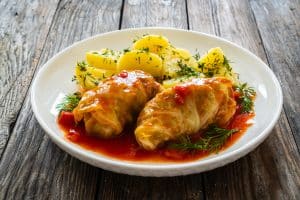
Gołąbki: (Main dish) Cabbage rolls stuffed with minced meat and rice, typically baked in a tomato-based sauce. A popular comfort food in Poland.
Grzane piwo: (Beverage) The name of this drink translates as “warm beer” and is made by gently heating beer with spices such as cloves, cinnamon, honey, and sometimes citrus peels. It is typically made with a light lager or wheat beer, and some recipes include egg yolk for added richness. The drink is served warm and is especially popular as a winter drink.
Gzik: (Dairy product) A spread traditional to Poland’s western regions. It is made of fresh cottage cheese mixed with sour cream, chives, and radishes. Served with boiled potatoes.
Honey: (Ingredient) Polish honey comes in many varieties based on where it is produced. These include lipowy (linden honey), gryczany (buckwheat honey), and wielokwiatowy (wildflower honey), each offering unique flavors. It has been used for centuries in desserts, marinades, and fermented drinks like miód pitny (mead).
Horseradish: (Seasoning) A sharp, pungent condiment often used by the Poles with meats, Easter dishes, and pickled vegetables.
Jagodzianki: (Breads) Sweet yeast buns filled with fresh blueberries, commonly eaten during summer.
Kapuśniak: (Soup) A hearty cabbage soup made with fresh or fermented cabbage, potatoes, and smoked meat.
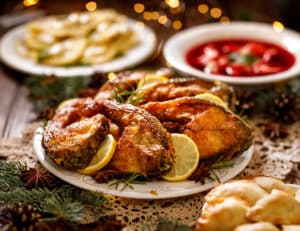
Karp po żydowsku: (Main dish) A traditional dish of Jewish origin, popular in Poland, especially in the east. It features carp simmered in a sweet-and-sour jelly with onions, carrots, raisins, and spices. The dish is known for its mildly sweet flavor, often achieved with sugar or honey. Once a staple of Jewish holiday meals, it also became part of Polish Christmas Eve traditions.
Kaszanka: (Main dish) A blood sausage made with pork blood, groats, and spices, often grilled or fried.
Kiełbasa: (Main dish) A general term for Polish sausage, which comes in many varieties, including smoked, fresh, and dried types. These days also available in the vegetarian version.
Kluski śląskie: (Side dish) Silesian dumplings made from mashed potatoes and flour, characterized by their round shape and small indentation in the center.
Kogel-mogel: (Dessert) A sweet egg-based treat made by whipping raw egg yolks with sugar, sometimes flavored with cocoa or honey.
Kołacz: (Breads) A round, sweet pastry, often decorated and served at weddings and special occasions.
Kompot: (Beverage) A traditional non-alcoholic fruit drink made by boiling fresh or dried fruits with sugar and spices.
Kopytka: (Side dish) Polish potato dumplings, similar to Italian gnocchi, often served with butter, breadcrumbs, or cheese.
Krupnik: (Soup) A barley soup cooked with vegetables and sometimes meat, often served with a dollop of sour cream.
Kwaśnica: (Soup) A sour, highland-style sauerkraut soup, commonly prepared with pork ribs or smoked meat.

Makowiec: (Breads) A rolled poppy seed cake with a sweet filling, traditionally eaten during Christmas and Easter.
Marjoram: (Seasoning) One of the most iconic Polish seasonings, used in żurek (sour rye soup), kiełbasa (sausages), and bigos (hunter’s stew).
Mazurek: (Dessert) A flat, shortcrust cake decorated with nuts, dried fruit, and icing, commonly made for Easter.
Miód pitny: (Beverage) This Polish mead is an alcoholic beverage made by fermenting honey with water, often with added spices or fruit for flavor. The stronger the honey concentration, the stronger the drink. Traditionally, it is aged for several years, resulting in a smooth, sweet, and complex drink that has been enjoyed in Poland since medieval times.
Mizeria: (Side dish) A simple cucumber salad mixed with sour cream, dill, and sometimes onions.
Mushrooms: (Ingredient; Appetizer) Mushrooms, or “grzyby” as they are known in Polish, are a staple of Polish cuisine and culture. Many Poles forage wild varieties like borowik (porcini), kurki (chanterelles), and maślaki (slippery jacks) from local forests to use them in soups, sauces, and pierogi fillings. Mushrooms are also dried or pickled and often eaten on their own as a side dish.
Ogórki kiszone: (Ingredient) Naturally fermented pickles made without vinegar, a staple in Polish cuisine.
Oscypek: (Dairy product) A smoked sheep’s milk cheese from the Tatra Mountains, often grilled and served with cranberry sauce.
Pasztet: (Main dish) A baked meat pâté made from pork, poultry, or game, often spread on bread.
Pierogi: (Main dish) Dumplings filled with various ingredients such as potatoes, cheese, meat, mushrooms, or fruit, served boiled or fried.
Pischinger: (Dessert) A no-bake layered wafer cake filled with chocolate or caramel cream, popular in Polish households.
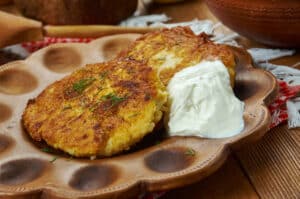
Placki ziemniaczane: (Main dish) Polish potato pancakes, often served with sour cream or sugar, depending on the region.
Pyzy warszawskie: (Main dish) Large, boiled potato dumplings, usually filled with meat. While more of a Polish dish, Jewish street vendors in Warsaw were known for selling pyzy along with other foods.
Rogal świętomarciński: (Breads) A crescent-shaped pastry filled with white poppy seeds, traditionally eaten in Poznań on St. Martin’s Day.
Rosół: (Soup) A clear chicken broth, often served with fine noodles, considered a staple of Polish Sunday dinners.
Rurki z kremem: (Dessert) Crispy pastry tubes filled with sweet whipped cream or custard.
Sękacz: (Dessert) A traditional spit cake with a layered texture, originating from northeastern Poland.
Śledzie po kaszubsku: (Main dish) Herring prepared in a sweet and sour sauce with onions, vinegar, and sometimes raisins, a specialty of Kashubian cuisine.
Sernik: (Dessert) A classic Polish cheesecake made with twaróg (farmer’s cheese), sometimes flavored with vanilla or chocolate.
Smalec: (Side dish) Rendered pork fat spread, often served with bread and pickles as a traditional snack.
Szarlotka: (Dessert) A Polish apple pie made with shortcrust pastry and cinnamon-spiced apples.
Śliwowica: (Spirit) A strong plum brandy, traditionally made in southeastern Poland.
Wódka: (Spirit) Better known in English as vodka, this spirit is typically distilled from grains like rye or wheat, or from potatoes, resulting in a clear, high-proof spirit. Some Polish versions will distill the drink with herbs or other flavorings, such as the famous brand Żubrówka (bison grass vodka), which has a distinct herbal taste. The Poles have claims to the invention of Vodka, dating back to the 14th century, although this is disputed by the Russians.

Zapiekanka: (Side dish) Baked baguette with cheese, mushrooms, and ketchup. Popular with party/pub-goers as a snack.
Zrazy: (Main dish) Beef roulades stuffed with bacon, onions, and pickles, braised in a savory sauce.
Żurek: (Soup) A sour rye soup made with fermented rye flour, served with sausage, eggs, and sometimes potatoes. A common dish during Easter.
You’ll Also Love
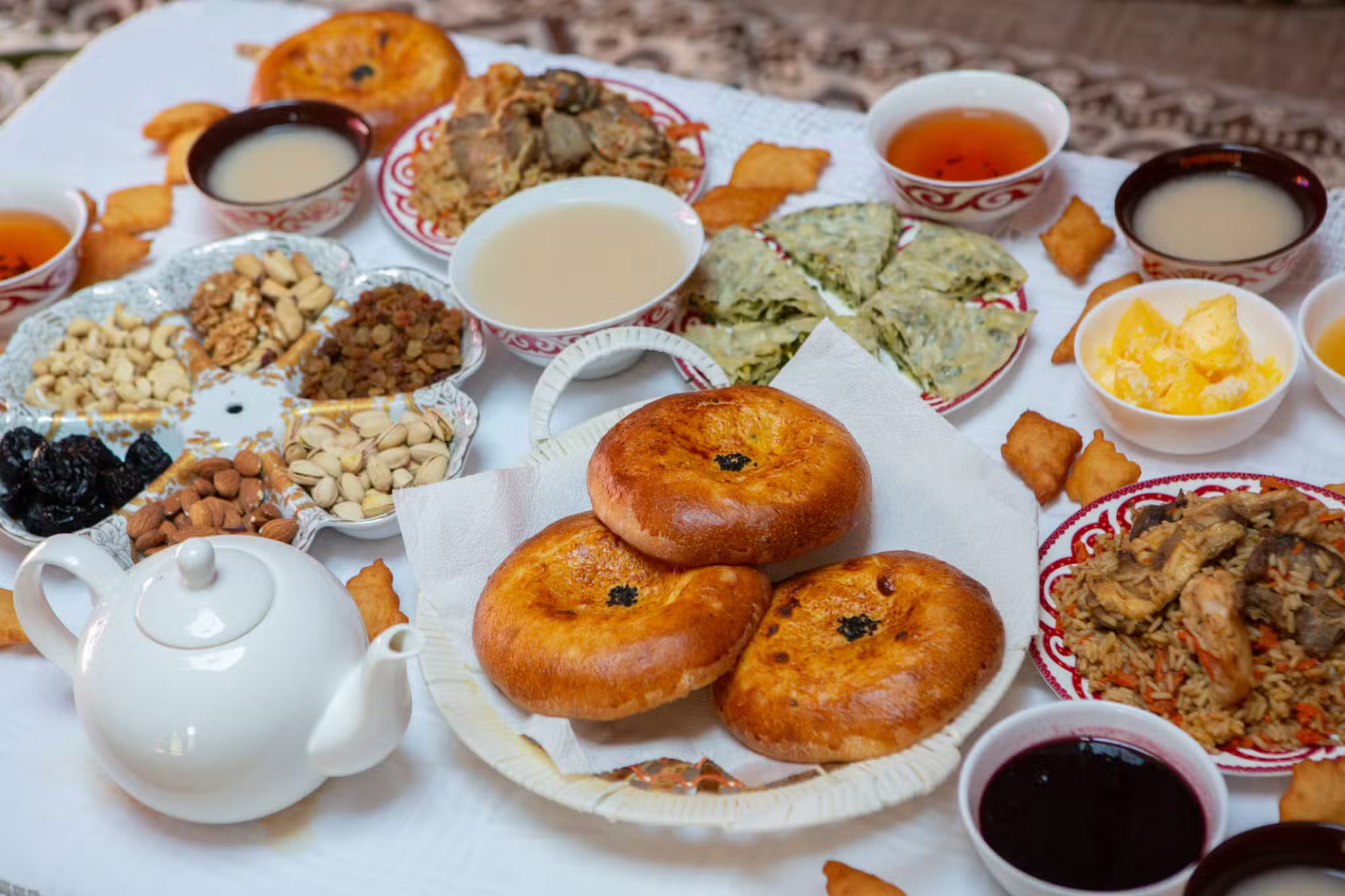
The Kyrgyz Food Dictionary
Kyrgyz cuisine reflects the country’s heritage of pastoral nomadism. Life was spent moving livestock from pasture to pasture and living in collapsible, transportable yurts. The livestock themselves were the primary, sustainable food source. Everything else was either gathered from the land or traded for. The Kyrgyz did not engage in intensive settled agriculture until forced […]
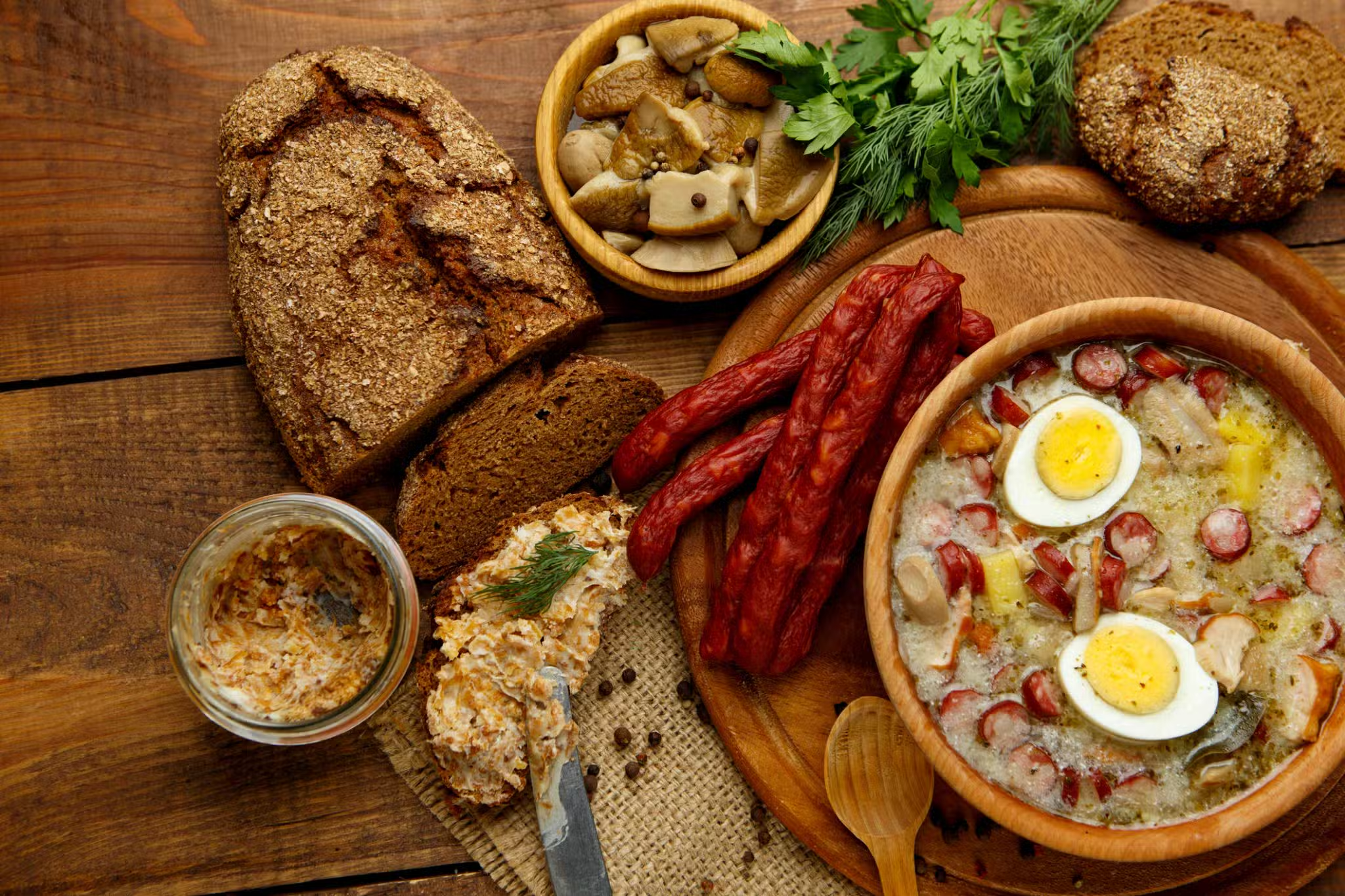
Dictionary of Polish Food
Polish food is hearty, flavorful, and deeply rooted in tradition. It is also experiencing a revival, re-inventing itself in major Polish cities as the country celebrates its heritage and embraces the latest trends and inspirations from world cuisines. Today, while dishes like pierogi, kielbasa, and bigos (hunter’s stew) are one you must try while visiting […]
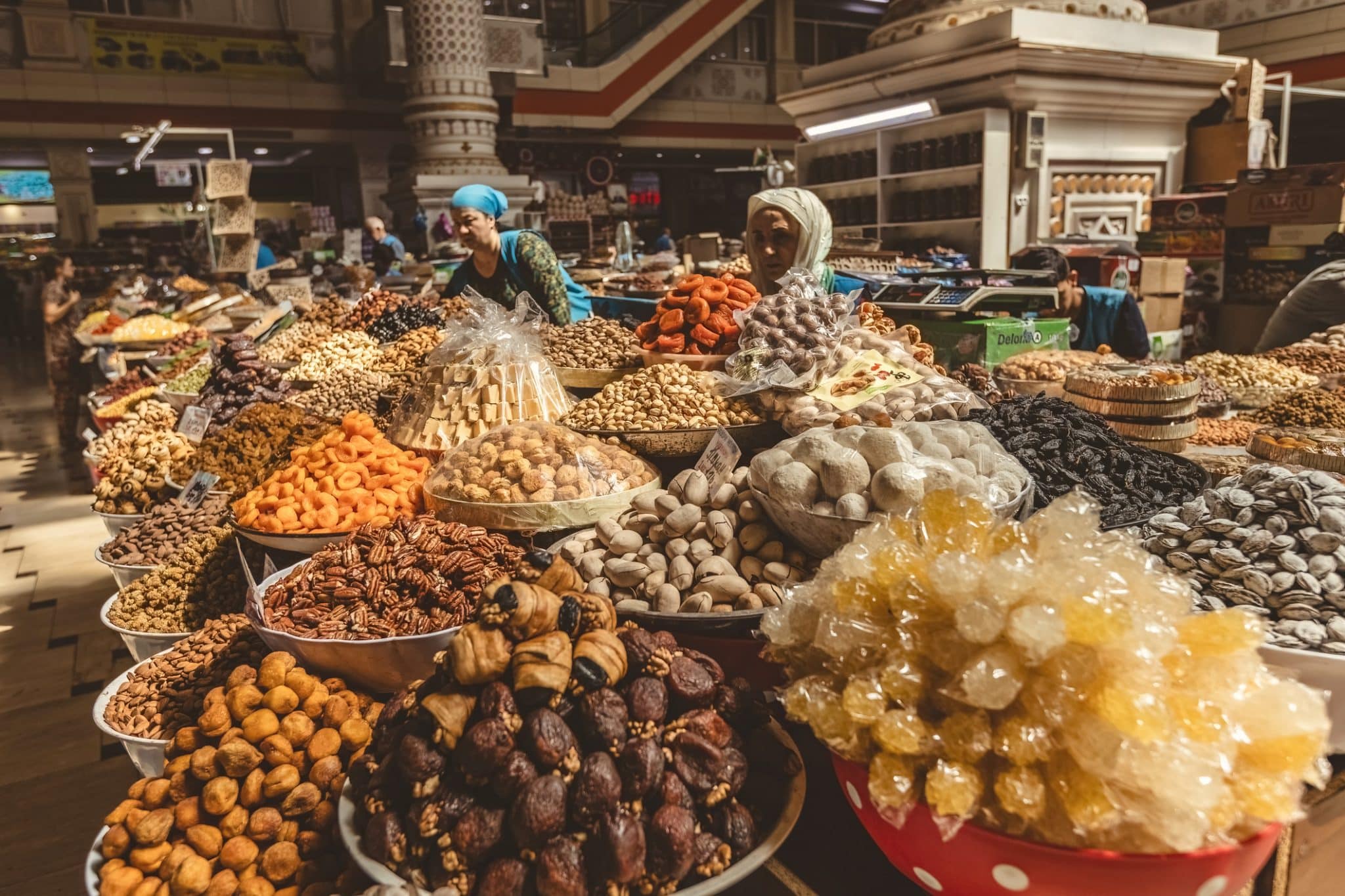
The Tajik Food Dictionary
Tajik cuisine draws influences from Persian, Turkic, and Afghan culinary traditions, as well as from the broader Central Asian steppe culture. Many dishes are held in common with Uzbekistan in particular. Of all the countries formerly a part of the Russian Empire and USSR, Tajikistan’s cuisine shows the least Russian influence. The Tajik diet heavily […]
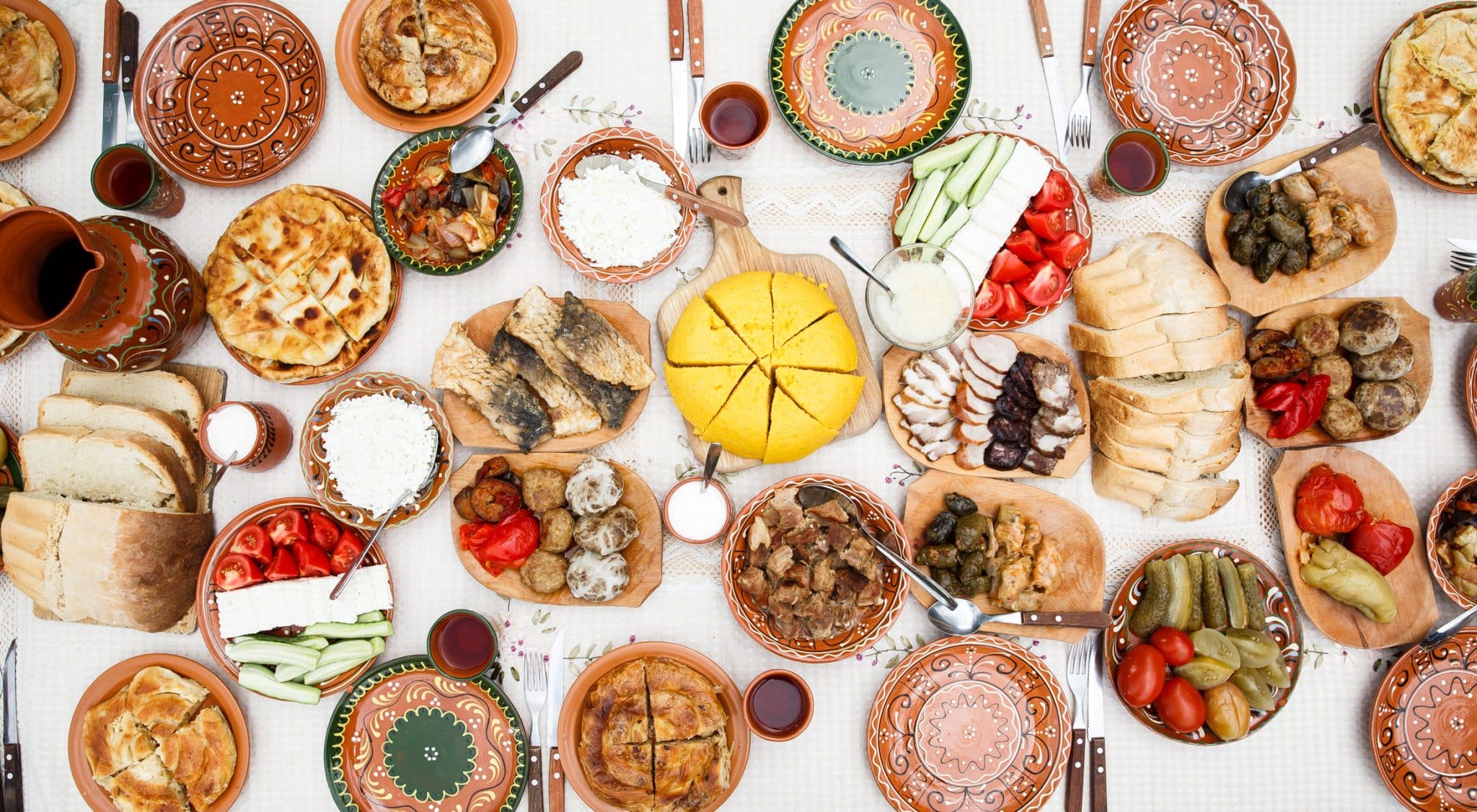
The Moldovan Food Dictionary
Moldovan cooking developed over centuries in the fertile lands between the Prut and Dniester rivers, where a temperate climate, rich soils, and rolling farmland supported abundant agriculture. Early inhabitants, including Thracians and Dacians, cultivated wheat, barley, and grapes, while herding sheep and cattle for dairy and meat. Roman rule expanded viticulture, but bread, dairy, and […]
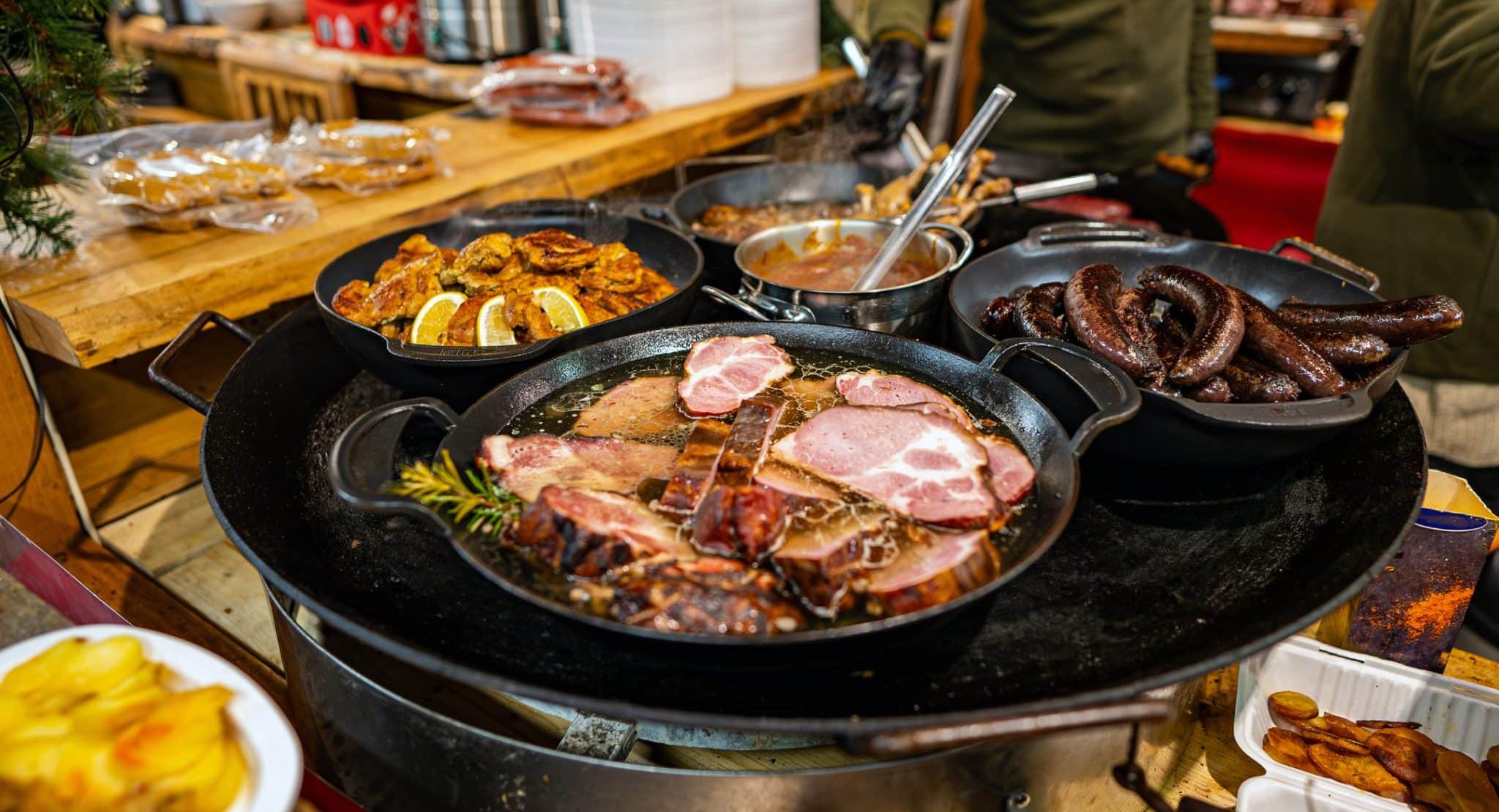
The Estonian Food Dictionary
Estonian food shares many similarities with other Baltic states and has additional influences from Finnish, German, and Russian cuisine. The Estonian climate significantly impacts domestic agriculture, although greenhouses allow some items to be grown during otherwise inhospitable weather conditions. Nevertheless, most fruits and many vegetables eaten today are imported. Most traditional are root vegetables such […]




